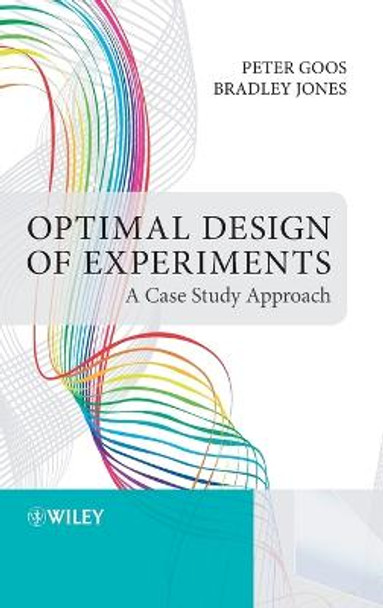Description
"It's been said: 'Design for the experiment, don't experiment for the design.' This book ably demonstrates this notion by showing how tailor-made, optimal designs can be effectively employed to meet a client's actual needs. It should be required reading for anyone interested in using the design of experiments in industrial settings."
-Christopher J. Nachtsheim, Frank A Donaldson Chair in Operations Management, Carlson School of Management, University of Minnesota
This book demonstrates the utility of the computer-aided optimal design approach using real industrial examples. These examples address questions such as the following:
- How can I do screening inexpensively if I have dozens of factors to investigate?
- What can I do if I have day-to-day variability and I can only perform 3 runs a day?
- How can I do RSM cost effectively if I have categorical factors?
- How can I design and analyze experiments when there is a factor that can only be changed a few times over the study?
- How can I include both ingredients in a mixture and processing factors in the same study?
- How can I design an experiment if there are many factor combinations that are impossible to run?
- How can I make sure that a time trend due to warming up of equipment does not affect the conclusions from a study?
- How can I take into account batch information in when designing experiments involving multiple batches?
- How can I add runs to a botched experiment to resolve ambiguities?
While answering these questions the book also shows how to evaluate and compare designs. This allows researchers to make sensible trade-offs between the cost of experimentation and the amount of information they obtain.
About the Author
Peter Goos, Department of Mathematics, Statistics and Actuarial Sciences of the Faculty of Applied Economics of the University of Antwerp. His main research topic is the optimal design of experiments. He has published a book as well as several methodological articles on the design and analysis of blocked and split-plot experiments. Other interests of his in this area include discrete choice experiments, model-robust designs, experimental design for non-linear models and for multiresponse data, and Taguchi experiments. He is also a member of the editorial review board of the Journal of Quality Technology.
Bradley Jones, Senior Manager, Statistical Research and Development in the JMP division of SAS, where he leads the development of design of experiments (DOE) capabilities in JMP software. Dr. Jones is widely published on DOE in research journals and the trade press. His current interest areas are design of experiments, PLS, computer aided statistical pedagogy, and graphical user interface design.
Book Information
ISBN 9780470744611
Author Peter Goos
Format Hardback
Page Count 304
Imprint John Wiley & Sons Inc
Publisher John Wiley & Sons Inc
Weight(grams) 553g
Dimensions(mm) 234mm * 158mm * 22mm







